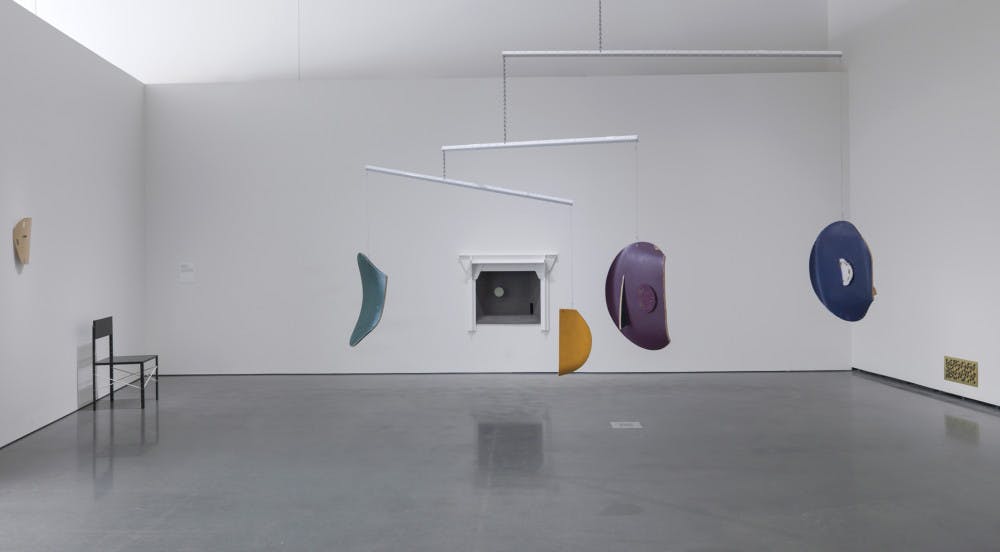Martin Boyce’s exhibition, “When Now is Night,” is a sobering reflection on the dark side of utopian 20th century Modernism, marking the first solo show in the United States by the contemporary Scottish sculptor.
Boyce’s exhibit was realized in conjunction with Dominic Molon, curator of contemporary art at the museum, who first met Boyce at a studio visit in 2001. The show opened Oct. 2 at the Rhode Island School of Design Museum.
Molon said he was impressed by Boyce and his work, paving the way for development of the show to begin in 2013. Boyce had “developed this international reputation as an artist” by then, Molon said.
The exhibit draws significantly from the art and architecture of the 20th century, Molon said. Boyce “emerged alongside other artists that came out of the 1990s looking at two things: modern architecture and design, and how it’s a conduit for amazing things” as well as the numerous “complications that came with this modernist movement.”
One of the central themes of the exhibition is domestic life as it was imagined by prominent figures of the Modernist movement, especially designers Charles and Ray Eames. Boyce’s pieces take well-known forms from the early 20th century and distort them to uncover the darker aspects of Modernism. “We create structures that are there to help us function, but can turn against us,” Molon said.
Most of the pieces in “When Now is Night” feature disfigured products of early Modernism, such as the Eames Storage Unit, a functional cabinet that reflects the movement’s streamlined and optimistic driving force, Molon said. Boyce shows shattered splints, painted splints carved into masks and boarded-over storage units that reflect the sometimes grim outlooks of Modernist designs.
“When Now is Night” opens with a room covered in dark, crisscrossed wallpaper adapted from the office box-filled title sequence of Alfred Hitchcock’s “North by Northwest.” In the largest space of the exhibition, a giant, fluorescent spider web hangs from the ceiling. It is the primary source of light in the room, but its form is clearly menacing. The ominous web is probably the most overt symbolism in the gallery, though most of the time Boyce uses subtler means to express his ideas.
One room is littered with identical, abstract paper leaves that might have come from a Modernist’s vision of the future. The leaves serve the same purpose as Boyce’s masks, which “act as a portal between the real, inhabited space of the gallery and the imaginary interiors and landscapes that have been removed from them,” according to a museum description of one piece.
Exhibit-goers noted that Boyce’s work was unique in the way that his sculpture represented his message.
Kai Salem ’18 said she appreciated how the curators put up temporary walls within the exhibition to complement the artwork, working in tandem with Boyce’s message of contrasts and distortion. “I just love how the curation created such different spaces to show the different works,” she said, adding that the lighting and shadows within the exhibition also seem carefully considered.
In a previous version of this story, Kai Salem's '18 name was spelled incorrectly. The Herald regrets the error.

ADVERTISEMENT




